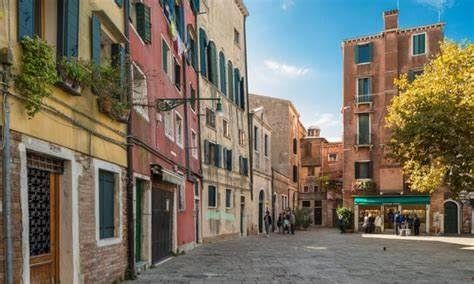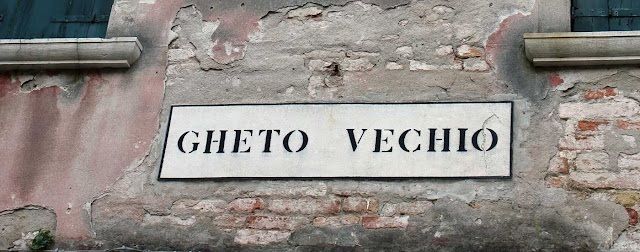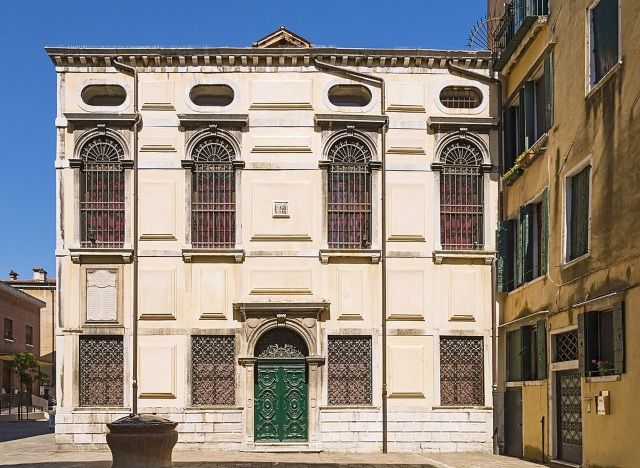One of the most intriguing and lesser-known aspects of Venice is its Jewish Ghetto.
Established in the 16th century, the Jewish Ghetto of Venice, Italy, is the oldest of its kind in the world.
It has a unique and fascinating history, and is a testament to the resilience of the Jewish community.
In this article, we will explore the history of the Venice Ghetto, and the cultural and historical attractions that make it a must-visit destination.
Jewish Ghetto in Venice, Italy: a quick look at the word "Ghetto"

It is uncertain the origin of the word "Ghetto". What is known is that it derives from the Venetian language.
In fact, the word "ghetto" seems to derive from the Venetian word ghèto, which means "foundry". Not far from the location of the Jewish Ghetto there has been a great foundry.
There are other theories related to the origin of this term, but "foundry" seems to be the most accredited one.
Now that we have introduced the term, it is time to start exploring the Jewish Ghetto in Venice, Italy!
The History of the Jewish Ghetto in Venice, Italy

The Venetian Ghetto was created in 1516 when the government of the Venetian republic forced the Jewish community to live in a designated area. For this reason, it is the first Jewish ghetto in the world.
The area was enclosed by gates and bridges, and the residents were not allowed to leave the ghetto at night.
Despite these restrictions, the Jewish community thrived and developed its own unique culture and traditions.
Over the centuries, the Jewish Ghetto in Venice, Italy, has undergone many changes. In the 18th century, it was expanded, and the buildings were renovated to provide better living conditions. During World War II, the Venetian Jews suffered greatly, as we all know.
Today, the Jewish Ghetto is indeed a thriving and vibrant community, with a rich history and culture.
What to See and Visit in the Venice's Jewish Ghetto

The Jewish Quarter is home to several historical and cultural attractions that are well worth a visit.
The Jewish Museum of Venice, for example, is a must-see, with its collection of Jewish art, manuscripts, and Judaica. Please note that at the time we are writing (beginning of 2023) the museum is closed as it is going under a major renovation.
Other attractions include the Jewish Cemetery, the Campo di Ghetto Nuovo, and the synagogues.
The most famous Venetian synagogues in the Jewish Ghetto.
Scuola Grande Spagnola, in the Old Ghetto area
Built in the 16th century, the Scuola Grande Spagnola (or Spanish Synagogue) is one of the largest and most ornate synagogues in the ghetto. Despite the fact that it is almost unrecognizable from the outside, the interiors are truly stunning.
The synagogue was founded by a Jewish community coming from Spain and is still in use today.
Scuola Levantina, in the Old Ghetto area
The Levantine Synagogue (or Scuola Levantina) is located in front of the Scuola Grande Spagnola and is another prominent synagogue in the Jewish Ghetto of Venice.
It was built in the 16th century and was used by the Sephardic community of Venice.
The synagogue features a beautiful interior with a painted ceiling and ornate decorations.
Scuola Grande Tedesca in Campo del Ghetto Novo (new Ghetto area)
The Scuola Grande Tedesca (or German Synagogue) was built in the 16th century and it is the oldest Synagogue of Venice.
Like the others, it is very difficult to identify the exact location of the synagogue but it is surprisingly beautiful from inside.
Scuola Italiana in Ghetto Nuovo Square (New Ghetto area)
The Scuola Italiana (Italian Synagogue) was built in the 16th century and was used by the Italian Jewish community of Venice, the poorest one. In fact, this synagogue is less decorated than the others.
Take your time to visit this interesting quarter of Venice and appreciate its Kosher restaurants, the bakeries and all the places that help you better understand the Jewish community.
Where It Is Located and How to Get There
The Jewish Ghetto is located in the Cannaregio district of Venice.
It is easily accessible by vaporetto (water bus) or by foot. The closest vaporetto stop is Guglie, and the area is also within walking distance of the Santa Lucia train station.
Once you arrive in the Jewish Ghetto, take some time to explore the area and soak up the unique atmosphere! It is such a fascinating destination for history buffs, cultural enthusiasts, and anyone interested in the unique history and traditions of the Jewish community.
With its rich history, cultural attractions, and vibrant community, you should include the Venetian Jewish Ghetto during your tours to the city.
The cover photo is by Henrik Berger Jørgensen via Flickr.

